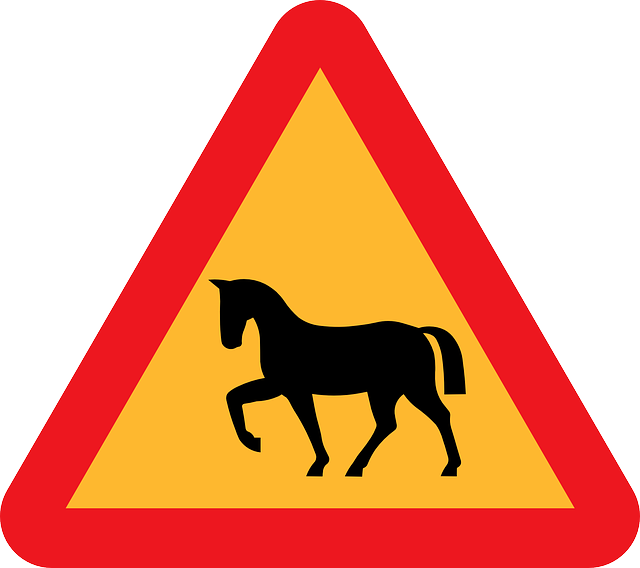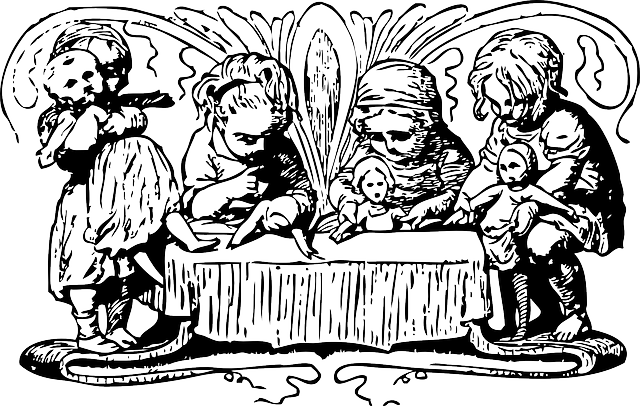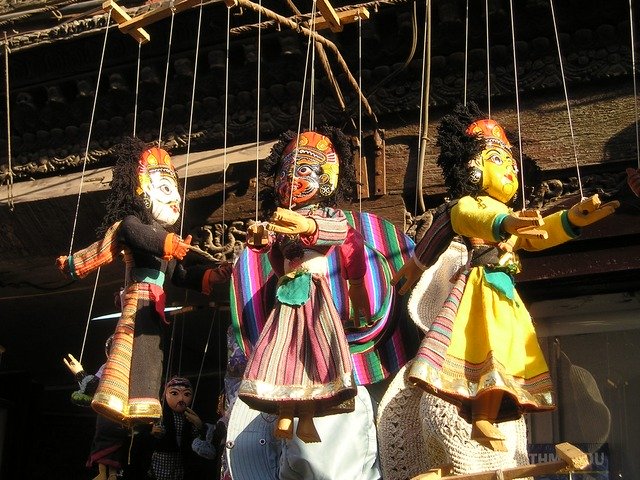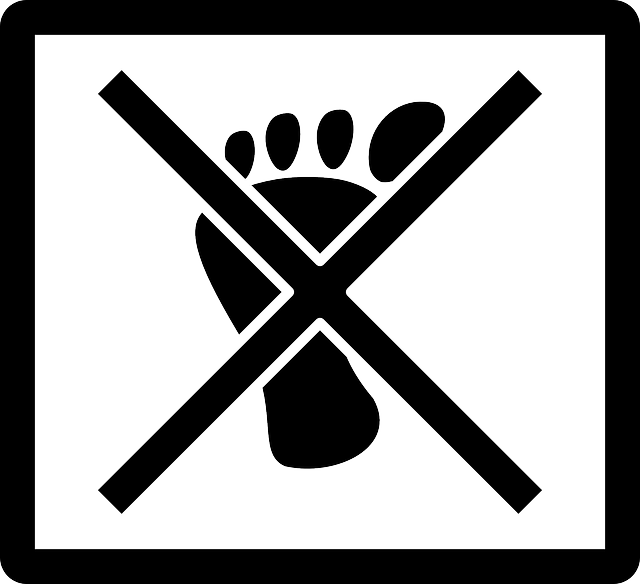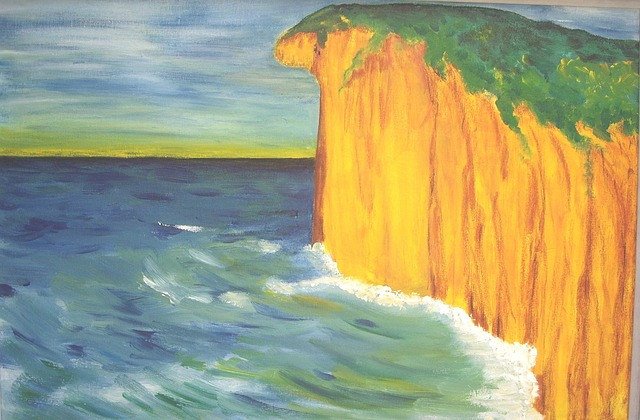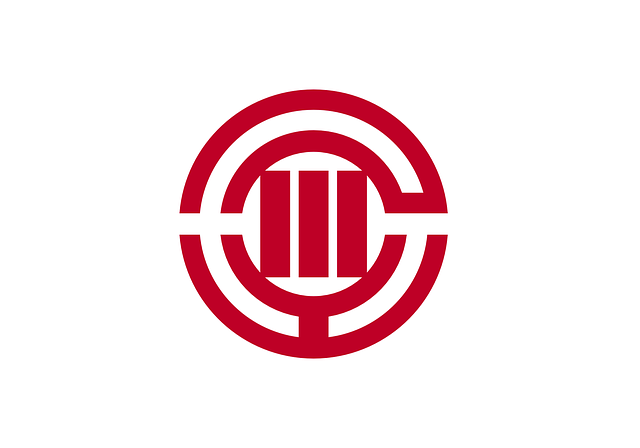ترحيل الشيشان والإنگوش
| Aardakh | |
|---|---|
| جزء من نقل السكان في الاتحاد السوڤيتي والحرب العالمية الثانية | |
|
Photo of the Chechens and Ingush being loaded onto trains for the deportation
| |
| المكان | شمال القوقاز |
| التاريخ | 23 فبراير-مارس 1944 |
| الهدف | طرد وإعادة توطين مجتمعات الڤايناخ |
نوع الهجوم |
نقل السكان, تطهير عرقي، مذبحة |
| الوفيات | 123,000 – 200,000 Chechens and Ingush, or between 1/4 and 1/3 of their total population ___________________ (Chechen sources claim 400,000 perished) |
| المنفذون | NKVD، الشرطة السرية السوڤيتية |
| الدافع | Russification, cheap labor for forced settlements in the Soviet Union |
| جزء من سلسلة عن |
| في الاتحاد السوڤيتي |
|---|
| السياسات |
|
| الشعوب |
|
| العمليات |
|
| سخرة أسرى الحرب العالمية الثانية |
|
| الترحيل الجماعي للعمال |
|
ترحيل الشيشان والإنگوش، وتُعهد أيضاً بإسم آردخ (بالشيشانية: Аардах؛ Aardakh)، العملية عدس (بالروسية: Чечевица, Chechevitsa; بالشيشانية: Вайнах махкахбахар Vaynax Maxkaxbaxar) was the Soviet forced transfer of the whole of the Vainakh (Chechen وIngush) populations of the North Caucasus to Central Asia on February 23, 1944, during World War II. The expulsion, preceded by the 1940–44 insurgency in Chechnya, was ordered by NKVD chief Lavrentiy Beria after approval by Soviet Premier Joseph Stalin, as a part of a Soviet forced settlement program and population transfer that affected several million members of non-Russian Soviet ethnic minorities between the 1930s and the 1950s.
The deportation was prepared from at least October 1943 and 19,000 officers as well as 100,000 NKVD soldiers from all over the USSR participated in this operation. The deportation encompassed their entire nations, as well as the liquidation of the Checheno-Ingush Autonomous Soviet Socialist Republic. The demographic consequences of this eviction were catastrophic and far reaching: of the (according to Soviet archives; others sources put the deportees at 650,000) 496,000 Chechens and Ingush who were deported, at least a quarter perished. In total, the archive records show that over a hundred thousand people died or were killed during the round-ups and transportation, and during their early years in exile in the Kazakh and Kyrgyz SSR as well as Russian SFSR where they were sent to the many labor camps in the forced settlements. Chechen sources claim that 400,000 perished presuming a higher number of deportees. Chechens suffered a higher proportional loss of life than any other ethnic group persecuted by population transfer in the Soviet Union. Chechens were under administrative supervision of the NKVD officials during that entire time.
The exile lasted for 13 years and the survivors would not return to their native lands until 1957, after the new Soviet authorities under Nikita Khrushchev reversed many of Stalin's policies, including the deportations of nations. A local report indicated that some 432,000 Vainakhs had resettled to the Chechen-Ingush ASSR by 1961, though they faced many obstacles while trying to settle back to the Caucasus, including unemployment, lack of accommodation and ethnic clashes with the local Russian population. Eventually, the Chechens and Ingush recovered and regained the majority of the population. This eviction left a permanent scar in the memory of the survivors and their descendants. February 23 is today remembered as a day of tragedy by most of Ingushs and Chechens. Many in Chechnya and Ingushetia classify it as an act of genocide, as did the European Parliament in 2004.
خلفية تاريخية
The Chechens and the Ingush speak languages that are closely related and have a degree of passive intelligibility, both being Vainakh languages. The Chechen-Russian conflict is one of the longest and most protracted conflicts in modern history, spanning three centuries. Its origins date back to 1785, when the Chechens fought against Russian expansionism into the Caucasus. The Caucasus War was fought between 1817 and 1864. The Russian Empire succeeded in annexing the area and subjugating its people, but also killed or deported numerous non-Russian peoples and was responsible for the Circassian genocide. The Circassians, the Ubykh and the Abaza were subsequently resettled to the Ottoman Empire. However, other Caucasus people were affected as well. There were up to 1.5 million Chechens in the Caucasus in 1847, but as a result of this war and ensuing expulsions, their number dropped to 140,000 in 1861, and then further to 116,000 in 1867. In 1865, at least 39,000 Chechens were exiled to the Ottoman Empire by the Russian Empire.
In spite of this, the Chechens intermittently demanded a restoration of their independence and rebelled again against the Russian Empire in 1878. During the era of the USSR, throughout the 1920s and 1930s, Chechens rejected the collectivization and Sovietization policies of the Soviet leader Joseph Stalin. This social resistance was nicknamed the 'Chechen problem'. During this time, Moscow constantly changed their territory, until the Chechen and Ingush Autonomous Oblasts were merged into a single Chechen-Ingush Autonomous Soviet Socialist Republic in 1936.
In 1940, another Chechen insurgency, led by Khasan Israilov, started in Galanchozh. It was partly inspired by the resistance of Finns against the invading Soviets in the Winter War in 1939. In February 1942, Mairbek Sheripov's group rebelled in Shatoysky and Itum-Kalinsky Districts. They united with Israilov's army to rebel against the Soviet system. The Soviet Air Force bombarded the Chechen-Ingush republic in the spring of 1942 to suppress the rebellion. During World War II, the Soviet government accused Chechens and Ingush of cooperating with the Nazi invaders. The Nazis wanted to reach the Azerbaijan SSR, whose oil reserves were the goal of Case Blue (Fall Blau). On August 25, 1942, a group of German paratroopers, led by saboteur Osman Gube, landed near the village of Berezhki in the Galashkinsky district in order to organize anti-Soviet actions yet managed to only recruit 13 people in the area.
The key period of the Chechen guerilla war started in August–September 1942, when German troops approached Ingushetia, and ended in the summer-autumn of 1943, with the Soviet counter-offensive that drove the Wehrmacht from the North Caucasus. There were some 20 million Muslims in the USSR, and the Soviet government feared that a Muslim revolt could spread from Caucasus to the whole of Central Asia. In August 1942, the Wehrmacht entered North Caucasus, seizing the Karachay-Cherkessia and Kabardino-Balkar Autonomous Soviet Socialist Republics. It also encouraged anti-Sovietism among the local populace. However, the Nazis never reached Grozny and the only town in the Chechen-Ingush ASSR they briefly occupied was Malgobek, which was inhabited by Russians.
Various historians, including Moshe Gammer, Ben Fowkes and Tony Wood, refute the Chechens' ties with the Germans, some pointing out that the Nazis stopped at the northwest outskirts of the Chechen-Ingush ASSR, near Mozdok, in Northern Ossetia, and that a majority of the Vainakh never even came into contact with the German army. While there were secret negotiations with the Germans near this border, the Chechen rebels pointed out that they did not favor a rule from Berlin nor from Moscow. Sheripov reportedly gave the Ostministerium a sharp warning that "if the liberation of the Caucasus meant only the exchange of one colonizer for another, the Caucasians would consider this... only a new stage in the national liberation war". In October 1942, Chechens assisted other volunteers to help erect a defensive barrier around Grozny. Between December 1942 and March 1943, Chechens and Ingush contributed 12 million rubles to the Soviet defensive war. 17,413 Chechens joined the Red Army and were awarded 44 decorations while a further 13,363 joined the Chechen-Ingush ASSR People's Militia, ready to defend the area from an invasion. By contrast, Babak Rezvani points out that only about a 100 Chechens collaborated with the Axis powers.
الترحيل
On orders from Lavrentiy Beria, the head of the NKVD, the entire Chechen and Ingush population of the Checheno-Ingush ASSR were to be deported by freight trains to remote areas of the Soviet Union. The operation was called "Chechevitsa" (Operation Lentil), its first two syllables pointing at its intended targets. The operation is referred to by Chechens often as "Aardakh" (the Exodus). This operation was being prepared and planned since at least October 1943, and included Beria's two most trusted NKVD officers, Ivan Serov and Bogdan Kobulov. Beria complained to Stalin about the "low level of labour discipline" among Chechens, the "prevalence of banditry and terrorism", the "failure of Chechens to join the communist party" and the "confession of a German agent that he found a lot of support among the local Ingush". Beria then ordered to implement the operation. When Supian Kagirovich Mollaev, the leader of the local government in the Checheno-Ingush ASSR, heard about the decision, he burst into tears, but soon pulled himself together and decided to follow orders. The Chechen-Ingush Republic was never fully occupied by the Nazi army, but the repressions were officially justified by "an armed resistance to Soviet power". The charges of the Vainakh collaboration with the Nazis were never subsequently proven in any Soviet court.
During World War II, 3,332,589 individuals were encompassed by Stalin's policies of deportations and forced settlements. Some of the stated reasons were allegedly to "defuse ethnic tensions", to "stabilize the political situation" or to punish people for their "act against the Soviet authority". According to the 1939 census, 407,690 Chechens and 92,074 Ingush were registered in the Soviet Union. On October 13, 1943, Operation Lentil commenced when about a hundred thousand troops and operative workers were moved into Checheno-Ingushetia, supposedly for mending roads and bridges. The soldiers even lived for a month inside the homes of the Chechens, who considered them guests. On February 20, 1944, Beria arrived to Grozny to supervise the operation.
On February 23, 1944 (on Red Army Day), the operation began. The NKVD troops went systematically from house to house to collect individuals. The inhabitants were rounded up and imprisoned in Studebaker US6 trucks, before being packed into unheated and uninsulated freight cars. The people were given only 15 to 30 minutes to pack for the surprise transfer. According to a correspondence dated March 3, 1944, at least 19,000 officers and 100,000 NKVD soldiers from all over the USSR were sent to implement this operation. Some 500 people were deported by mistake even though they were not Chechens or Ingush. The plan envisaged that 300,000 people were to be evicted from the lowland in the first three days, while in the following days the remaining 150,000 people living in the mountain regions would be next in line.
Many times, resistance was met with slaughter, and in one such instance, in the aul of Khaibakh, about 700 people were locked in a barn and burned to death by NKVD General Mikheil Gveshiani, who was praised for this and promised a medal by Beria. Many people from remote villages were executed per Beria's verbal order that any Chechen or Ingush deemed 'untransportable should be liquidated' on the spot. This meant that the old, the ill and the infirm were to either be shot or left to starve in their beds alone. The soldiers would sometimes plunder the empty homes. An eyewitness recalled the actions of the NKVD forces:
They combed the huts to make sure there was no one left behind... The soldier who came into the house did not want to bend down. He raked the hut with a burst from his submachine gun. Blood trickled out from under the bench where a child was hiding. The mother screamed and hurled herself at the soldier. He shot her too. There was not enough rolling stock. Those left behind were shot. The bodies were covered with earth and sand, carelessly. The shooting had also been careless, and people started wriggling out of the sand like worms. The NKVD men spent the whole night shooting them all over again.
Those who resisted, protested or walked too slow were shot on the spot. In one incident, NKVD soldiers climbed up Moysty, a high mountain, and found 60 villagers there. Even though their commander ordered the soldiers to shoot the villagers, they fired in the air. The commander then ordered half of the soldiers to join the villagers and another platoon shot them all. 2,016 'anti-Soviet' people were arrested, and 20,072 weapons were confiscated in the operation.
Throughout the North Caucasus, about 650,000 people (according to Dalkhat Ediev, 724,297) were deported in 1943 and 1944 by the Soviet forces. 478,479 people were forcibly resettled in the Aardakh: 387,229 Chechens and 91,250 Ingush. They were loaded onto 180 special trains, about 40 to 45 persons into each freight car. A combined total of 14,200 freight cars and 1,000 flat cars were used for this mass forcible transfer from February 23 to March 13, a rate of almost 350 freight cars per day. Some 40% to 50% of the deportees were children. The Chechens were the second most numerous repressed peoples in the USSR, after the Volga Germans. Tens of thousands of Kalmyks, Balkars, Meskhetian Turks and Karachays were also deported from the region. Only Chechen and Ingush women married to non-punished peoples were spared from the deportation. However, Russian women married to Chechen or Ingush men were subject to deportation unless they divorced. Their livestock was sent to kolkhozes in Ukrainian SSR, Stavropol Krai, Voronezh and Orel Oblasts. Many of these animals perished from exhaustion.
Some 6,000 Chechens got stuck in the mountains of the Galanzhoy district due to the snow, but this slowed the deportation only minimally: 333,739 people were evicted, of which 176,950 were sent to trains already on the first day of the operation. Beriya reported that there were only six cases of resistance, 842 were "subject to isolation" while 94,741 were removed from their homes by 11 p.m. on the first day of the operation. Each family was allowed to carry up to 500 kg of personal belongings on the trip. The people were transported in cattle trains that were not appropriate for human transfer, lacking electricity, heating or running water. The exiles inside endured epidemics, which lead to deaths from infections or hunger. The transit to Central Asia lasted for almost a month. Some of the epidemics included typhus. One witness, who was seven years old at the time of her family's deportation, recalls that the wagons were so full of people that there was no space to move inside them. The exiles were given food only sporadically during the transit and did not know where they were being taken to. The wagons did not even stop for bathroom breaks: the passengers had to make holes in the floor to relieve themselves. The special trains traveled almost 2,000 miles and discharged the peoples into desolate areas of Central Asia, devoid of shelters or food. 239,768 Chechens and 78,479 Ingush were sent to the Kazakh SSR, whereas 70,089 Chechens and 2,278 Ingush arrived in Kirgiz SSR. Smaller number of the remaining deportees were sent to Uzbek SSR, Russian SFSR and Tajik SSR.
—Isa Khashiyev, 2014, describing his deportation and arrival at Kokshetau, Kazakhstan
The persecution of the Chechens did not stop there. In May 1944, Beria issued a directive ordering the NKVD to browse the entire USSR in search for any remaining members of that nation, "not leaving a single one". As a result, an additional 4,146 Chechens and Ingush were found in Dagestan, Azerbaijan, Georgia, Krasnodar Krai, Rostov and Astrakhan Oblast. In April 1945, Beria was informed that 2,741 Chechens were deported from the Georgian SSR, 21 from the Azerbaijan SSR and 121 from Krasnodar Krai. In Moscow, only two Chechens managed to avoid eviction. All the Chechen and Ingush were discharged from the Red Army and sent to Central Asia as well. With these supplementary exiles, the number of the deported Chechens and Ingush grew to a total of 493,269. In July 1944, Beria reported an even higher figure to Stalin, claiming that a total of 496,460 Chechen and Ingush were deported. This ethnic cleansing operation was marked by an utter "culture of impunity". Many perpetrators of Operation Lentil were, in fact, even awarded the Suvorov First Class prize for arresting and capturing Chechens and Ingush.
As with eight other "punished peoples" of the Soviet Union, the Chechens were put into the regime of special settlements. There was no barb wire around their compound, but any Chechen aged 16 or over had to report to the local NKVD officials each month. Those who tried to escape were sent to the gulag. This status of a special settler was supposed to be inherited by the children of the exiles. The exiles were assigned with the heaviest tasks, such as constructing sites, mines and factories in the most inhospitable places. The only compensation they received for their work was food coupons. They would be punished if they would not do any work assigned to them. Local authorities would act harshly towards them: sometimes they would beat the children of the Chechens to death. At Krasnoyarsk about 4,000 Chechens were assigned to forced labor camps. This, combined with malnutrition due to the negligence of the authorities to provide enough food for the newly arrived exiles, led to high death rates. The settlers were not provided with adequate accommodation: on September 1, 1944, only 5,000 out of the 31,000 families in Kirgiz SSR were provided with housing. One district prepared only 18 apartments for 900 families. Some exiles had to live in unheated tents. The Chechen children had to attend school in the local language, not their own. Several cases of rebellion were reported: in Krasnoyarsk in October 1954, some 4,000 Chechens managed to escape from a gulag concentration camp. The Soviet police found and killed half of them, but the other half managed to hide in the vast outdoors.
الأعقاب
الخسائر في الأرواح والممتلكات
Many deportees died en route, and the extremely harsh environment of exile, especially considering the amount of exposure to thermal stress, killed many more. The temperatures in the Kazakh SSR would drop anywhere from −50 °م (−58 °ف) during winter and then hit up to 50 °م (122 °ف) during summer.
They travelled in wagons that were locked from the outside, without light or water, during winter. Trains would stop and open the wagons only occasionally to bury the dead in the snow. The local people at the train stations were forbidden to help the sick passengers or to give them any medicine or water. Some Russian sources claim that 1,272 people died during this transit. In 1948, there were 118,250 special settlers in Kazakh SSR "in extreme need in regard for food" and authorities reported thousands of children dying from undernourishment. Food rations were fixed at only 116 grams of flour and 56 grams of grain per day for each person, which was even below the standards of the captives in the Auschwitz concentration camp. (that standard being 300 grams of bread )
The local authorities in Kyrgyzstan set up enough supplies for only four months. One mother tried to make soup out of grass for her children. According to official Soviet reports, 608,749 Chechen, Ingush, Karachay and Balkars were registered in exile in Central Asia by 1948. The NKVD gives the statistic of 144,704 people who died in 1944–48 alone: a death rate of 23.7% per all these groups. 101,036 Chechens, Ingush and Balkars died in Kazakhstan and 16,052 in Uzbekistan. Another archive record shows that 104,903 of the deported Chechens died by 1949. This means that their group suffered the highest death toll of all the deported peoples within the Soviet Union.
Professor Jonathan Otto Pohl estimates the combined number of deaths among Chechen and Ingush exiles during transit and confinement in special settlements by 1949 at 123,000. Out of these deaths, Chechens comprised 100,000 and Ingush 23,000. Thomas McDonell also gives a figure of at least 100,000 Chechens who died from starvation and diseases in exile, but does not give a figure for the Ingush casualties. Tom K. Wong, Associate Professor of Political Science, estimates that at least 100,000 Vainakhs died in the first three years in exile, excluding those who perished during the transit and the round-ups. Historian William Flemming released calculations giving a minimum of 132,000 Chechens and Ingush who died between 1944 and 1950. In comparison, their number of births in that period was only 47,000. Thus, the Chechen and ingush population fell from 478,479 in 1944 to 452,737 in 1948. From 1939 to 1959, the Chechen population grew by 2.5%. In comparison, between 1926 and 1939, it grew 28%. Historian Alexander Nekrich stated that the net losses of Chechens between 1939 and 1959 (after allowing for wartime losses) were 131,000, and of Ingush 12,000. German journalist Lutz Kleveman determined that 150,000 people did not survive the first four years of winter cold in Central Asia. Estimates for the maximum deaths and demographic losses of the Chechen and Ingush range from about 170,000 to 200,000, thus ranging from a quarter of the total Chechen population to nearly a third being killed in those years. Chechen historians claim 400,000 perished in deportation and exile; using a presumably higher estimate for the number of deportees.
The demographer Dalkhat Ediev, in a study of casualty figures for all ethnic groups that were singled out for "punishment" by Stalin, found that deaths due to the deportations included 125,500 of the Chechen deportees and 20,300 of the Ingush deportees, or 30.8% of the Chechens and 21.3% of the Ingush. Meanwhile, the short-term demographic losses are estimated at 51.1% for the Chechens and 47.9% for the Ingush. He estimates that the Chechen population dropped to a low of 285,000 and the Ingush to 78,800 people in October 1948. However, despite these heavy losses, the Chechens subsequently increased their fertility rates, which is seen by some as a manifestation of their resiliance and determination to survive.
Political, cultural, social and economic consequences
The Checheno-Ingush ASSR was dissolved and transformed into Grozny Oblast, which included also the Kizlyarsky District and Naursky Raion, and parts of it were given to North Ossetia (part of Prigorodny District), Georgian SSR and Dagestan ASSR. As a result, Georgian SSR "grew" from 69,300 to 76,400, North Ossetiya from 6,200 to 9,200 and Dagestan from 35,000 to 38,200 square kilometers. Names of repressed nations were totally erased from all books and encyclopedias. By the next summer, a number of Chechen and Ingush placenames were replaced with Russian ones; mosques were destroyed, and a massive campaign of burning numerous historical Nakh language books and manuscripts was near complete. Their villages were razed to the ground and their graveyards bulldozed. With the native population gone, the Chechen region experienced a huge lack of skilled workers: the local oil production industry dropped more than ten times in 1944 compared to 1943.
On November 26, 1948 the Presidium of the USSR Supreme Soviet issued a decree which sentenced the deported nations to a permanent exile in those distant regions. This decree was not only mandatory for Chechens and Ingush, but also for Crimean Tatars, Germans, Balkars and Kalmyks. The settlers were not allowed to travel beyond three kilometers of their new place of residence. The authorities also prohibited any public mention or documentation of the deportations and its murders. Thousands of historical Vainakh texts, along with their origins, were lost when the Russians destroyed the public and private library of the peoples of Chechnya. The settlers were the target of various provocations in the Kazakh SSR: in December 1954, students in Elizavetinka taunted the Chechens as "traitors and betrayers of motherland". In May 1955, a worker in a coal mine engaged in a fight with a Chechen colleague in Ekibastuz. This escalated into a pogrom in which Russian hooligans even attacked a police station which sheltered the runaway Chechens. Many refugees from the Soviet Union were moved to the empty homes, including Russians, Ukrainians, Avars and Ossetians. As a consequence of this, the Russians comprised 49% of the Chechen-Ingush ASSR by 1959. By one report dated April 8, 1957, there were 415,000 Chechen and Ingush living in the Kazakh and Kyrgyz SSR, or 90,000 families. 38,500 were employed in the industry, 91,500 in agriculture, 25,000 in offices.
العودة
In 1953, the three architects of the deportation perished: shortly after Stalin died on March 5, Beria and Kobulov were arrested on June 27, 1953. They were convicted on multiple charges, sentenced to death and executed on December 23, 1953. However, these charges were unrelated to the crimes of deportations, and were merely a ploy to remove them from power. Nikita Khrushchev became the new Soviet leader and revoked numerous deportations, even denouncing Stalin. In his secret speech on February 24, 1956, Khrushchev condemned these Stalinist deportations:
The Soviet Union is justly considered as a model of a multinational state because we have in practice assured the equality and friendship of all nations who live in our great fatherland. All the more monstrous are the acts whose initiator was Stalin and which are crude violations of basic Leninist principles of the nationality policy of the Soviet State. We refer to the mass deportations from their native places of whole nations, together with Communists and Komsomols without exception.
On July 16, 1956 the Presidium of the USSR Supreme Soviet adopted a decree lifting the restrictions of the legal status of Chechens, Ingush and Karachais in the special settlements. In January 1957, the Soviet Council of Ministers passed a decree allowing repressed nations to freely travel in the Soviet Union. The Chechens and Ingush were thereby rehabilitated. Their exile lasted 13 years. Some started slowly returning to the Caucasus already in 1954, but were sent back by the authorities. During 1956 alone, between 25,000 and 30,000 Chechens and Ingush returned to their homeland, some even carrying the bodies of their relatives. The Soviet government tried to give them autonomy inside Uzbekistan or to resettle them in other parts of the Caucasus, but the returnees were adamant to return to their native lands.
Over 50,000 families returned in 1957. By 1959, Chechens and Ingush already comprised 41% of the Chechen-Ingush ASSR. 58.2% of Chechens and 45.3% of Ingushetians returned to their native lands by that year. By 1970, this peaked with 83.0% of all Chechens and 72.1% of all Ingush being registered in the Chechen-Ingush ASSR. However, this distribution fell to 76.8% and 69.0%, respectively, by 1989. In comparison, 91.9% of all Chechens and 91.9% of all Ingush were concetrated in their titular republic in 1926. However, some Chechens stayed in Kyrgyzstan: some were afraid of the harsh long trip, some lacked the money to travel. By 2010, there were still a 100,000 Chechens living in Kazakhstan.
When the Chechens and Ingush returned to their homeland, they found their farms and infrasturcture had deteriorated. Some of the mountain regions were still a restricted zone for the returnees, which meant they had to settle in the lowlands. Worse still, they found other peoples living in their homes, and viewed these other ethnicities (Ossetians, Russians, Laks, and Avars) with hostility. Some Laks, Darghins and Avars had to be moved back to Dagestan, where they came from. Conflicts between Ossetians and Ingush in Prigorodny were sparked. The massive numbers of Vainakhs who were coming back to the Northern Caucasus took the locals by surprise: the Soviet government thus decided to temporarily halt the influx of returnees in the summer of 1957. Many Chechens and Ingush sold their homes and belongings, and quit their jobs to be able to return. A renewed ethnic conflict between Chechens and Russians was also on the rise. The Russians, angered by issues over land ownership and job competition, rioted as early as 1958. The 1958 riot was sparked by a fight between a Russian sailor and an Ingush youngster over a girl in which the Russian was fatally injured. In the next four days, the Russians formed mob riots and looted the Vainakh property, seizing government buildings and demanding either a restoration of Grozny Oblast, or a creation of a non-titular autonomy, re-deportation of the Chechens and Ingush, establishment of "Russian power", mass search and disarming of Chechens and Ingush, before Soviet law enforcement dispersed the rioters. Although the riot was dispersed and denounced as "chauvinistic", afterward the republican government made special efforts to please the Russian populace, including mass discrimination against the Chechens aimed at preserving the privileged position of the Russians.
In 1958, the Chechen-Ingush ASSR was officially restored by a decree direct from Moscow, but in previous 1936 borders. North Ossetia kept the Psedakh and Prigorodny District, Georgian SSR kept the Daryal Gorge, amounting to 1/6 of lost land for Ingushetia, while the Chechen-Ingush ASSR was "compensated" with the Itum-Kalinsky and Prigorodny Districts from the Georgian SSR. This was done to dissipate the demographic impact of the 419,000 Vainakh returnees on Russians who moved there. By 1989, the 750,000 Chechens already comprised a majority (55%) of the Chechen-Ingush ASSR, while 300,000 Russians comprised 22% and 163,700 Ingush 12% of the population. Chechens started to gain control by the 1970s. Ultimately, the attempt to make Checheno-Ingushetia more multi-ethnic in order to discourage potential uprisings failed due to the higher birthrate of the Vainakhs.
A local report from 1961 indicated that out of 524,000 Vainakhs, 432,000 had resettled to the Chechen-Ingush ASSR, 28,000 to Dagestan and 8,000 to North Ossetia. However, ethnic clashes continued even in the 1960s: in 1965 alone, 16 such clashes were recorded, resulting in 185 injuries and 19 fatalities. Chechens were greatly disadvantaged after being allowed to return. There were no Chechen-language schools, leading to a lack of education of the populace (which did not universally understand Russian). According to sociologist Georgi Derluguyan, the Checheno-Ingush Republic's economy was divided into two spheres, in which the Russian sphere had all the jobs with higher salaries in the urban areas: no Chechen cadre was promoted to a top position all until 1989. In the 1960s, in order to finance their families, some forty thousand men temporarily migrated from Chechen-Ingushetia each year to find part-time jobs in Kazakhstan and Siberia, thanks to their contacts from the time of their exile. On paper, the Chechen-Ingush Republic enjoyed the same privileges as other Soviet ASSRs, but in reality it had very little actual Chechens or Ingush representing its government, which was run directly by the Russians. Despite being rich with oil, the Chechen-Ingush ASSR remained the second poorest region of the entire USSR. Yusup Soslambekov, a chairman of the Chechen parliament after 1991, lamented that his people returned from exile to their homes "not as masters of that land but as mere inhabitants, tenants. Other people took our jobs in our factories".
التذكر والذكرى
The deportation left a permanent scar in the memory of the Chechens and is today regarded by some historians as "one of the most significant ethnic traumas of the Soviet period". Some descendants of the peoples of the North Caucasus are even today in fear of a new deportation. One historian named it "the central defining event in modern Chechen history". It also played a role in the Chechen mistrust at the Kremlin and a partial motivation for the subsequent declaration of independence in 1991 and the First and Second Chechen War in the 1990s and 2000s. For instance, insurgent Shamil Basayev referred to his 40 relatives who died during the deportation while Aslan Mashadov, the President of Ichkeria, stated that February 23 remains "one of the most tragic dates for his people" and that the goal of the Russian government has always stayed the same: "Chechnya without Chechens". Historian Nikolay Bugay described the deportation as a "perversion of Lenin's national policy and a direct disregard for the constitutional rights of the peoples".
In 1991, Chechen President Dzhokhar Dudayev made political capital by, in a symbolic move, sending out officials to gather these lost gravestones (that had been used by the Soviets for the construction of pedestrian footpasses and foundations of pig pens), many of which had lost their original inscriptions, and to construct out of them a memorial in the center of Grozny. The memorial was made to symbolize both Chechen remorse for the past as well as the desire to, in the name of the dead ancestors, fashion the best possible Chechen Republic out of their land and work hard towards the future. It bears an engravement, reading: "We will not break, we will not weep; we will never forget." Tablets bore pictures of the sites of massacres, such as Khaibakh. The memorial was damaged during the subsequent Russo-Chechen wars. It has been later moved and dismantled by Ramzan Kadyrov's pro-Russian government, sparking much controversy.
Some think that this deportation constitutes an act of genocide according to the IV Hague Convention of 1907 and the Convention on the Prevention and Punishment of the Crime of Genocide of the U.N. General Assembly (adopted in 1948), including French historian and expert on communist studies Nicolas Werth, German historian Philipp Ther, Professor Anthony James Joes, American journalist Eric Margolis, Canadian political scientist Adam Jones, professor of Islamic History at the University of Massachusetts Dartmouth Brian Glyn Williams, scholars Michael Fredholm and Fanny E. Bryan.Raphael Lemkin, a lawyer of Polish-Jewish descent who initiated the Genocide Convention, assumed that genocide was perpetrated in the context of the mass deportation of the Chechens, Ingush, Volga Germans, Crimean Tatars, Kalmyks and Karachay. German investigative journalist Lutz Kleveman compared the deportation to a "slow genocide". In this case this was acknowledged by the European Parliament as an act of genocide in 2004:
...Believes that the deportation of the entire Chechen people to Central Asia on 23 February 1944 on the orders of Stalin constitutes an act of genocide within the meaning of the Fourth Hague Convention of 1907 and the Convention for the Prevention and Repression of the Crime of Genocide adopted by the UN General Assembly onتسعة December 1948.
Experts of the United States Holocaust Memorial Museum cited the events of 1944 for a reason of placing Chechnya on their genocide watch list for its potential for genocide. The separatist government of Chechnya also recognized it as genocide. Members of the Chechen diaspora and their supporters promote February 23 as World Chechnya Day to commemorate the victims.
The Chechens, along with the Ingush, Karachai and Balkars, are represented in the Confederation of Repressed Peoples (CRP), an organization that covers the former Soviet Union and aims to support and rehabilitate the rights of the deported peoples.
في الثقافة الشعبية
Aleksandr Solzhenitsyn's book The Gulag Archipelago, published in 1973, mentioned the Chechens: "They are a nation that refused to accept the psychology of submission... I never saw a Chechen seek to serve the authorities, or even to please them".
In 1977 Vladimir Vysotsky wrote the song Летела жизнь (Letela zhizn) devoted to the deportation.
Anatoly Pristavkin wrote the 1987 novel The Inseparable Twins which deals with this deportation. Semyon Lipkin published the novel Dekada in 1983. Iunus Desheriev, a philologist of Chechen origin, published an autobiography about how he escaped the fate of his people thanks to assistance from Russian friends.
On February 19, 1989, the Yaryksu-Auch village built a monument to the victims of Stalinism.
On February 23, 1997, the 9 towers memorial was unveiled in Nazran, devoted to the deportation.
The Chechen-Russian film Ordered to Forget (Приказано забыть) by Hussein Erkenov was released in 2014 and depicts the 1944 Khaibakh massacre of the Chechens.
انظر أيضاً
- 1951 anti-Chechen pogrom in Eastern Kazakhstan
- شغب گروزني 1958
- Ethnic cleansing of Circassians
- Khaibakh massacre
- Deportation of the Crimean Tatars
- Kalmyk deportations of 1943
الهامش
- ^ Chanturiya, Kazbek (23 February 2017). "After 73 years, the memory of Stalin's deportation of Chechens and Ingush still haunts the survivors". OC Media. Retrieved 27 November 2019.
- ^ Martin 2001, p. 326.
- ^ Pohl 1999, p. 48.
- ^ Ther 2014, p. 118.
- ^ Bugay & Gonov 2002, p. 43.
- ^ Russell 2007, p. 33.
- ^ Refworld (2004). "Chronology for Chechens in Russia". Minorities at Risk. Archived from the original on September 21, 2017. Retrieved September 20, 2017.
- ^ Richmond 2013, p. 17, 166.
- ^ Gutsche 1979, p. 226.
- ^ Jaimoukha 2005, p. 14.
- ^ Reynolds 2014, p. 211.
- ^ Werth 2006, p. 347.
- ^ Cornell 2005, p. 188.
- ^ Bryan 1984, p. 99.
- ^ Bugay 1996, p. 100.
- ^ Bugay 1996, p. 101.
- ^ Burds 2007, p. 16–26.
- ^ Motadel 2014, p. 135.
- ^ Dunlop 1998, p. 59.
- ^ Wood 2007, p. 36; Gammer 2006, p. 161–165; Fowkes 1996, p. 71.
- ^ Williams 2015, p. 47; Porter 1997, p. 146.
- ^ Williams 2015, p. 47.
- ^ Wood 2007, p. 36.
- ^ Dunlop 1998, p. 60.
- ^ Dunlop 1998, p. 60–61.
- ^ Williams 2015, p. 46.
- ^ Rezvani 2014, p. 218.
- ^ Werth 2008, p. 412.
- ^ Fowkes 1998, p. 10.
- ^ Dushnyck 1975, p. 503.
- ^ Parrish 1996, p. 107.
- ^ Dunlop 1998, p. 61.
- ^ Kreindler 1986, p. 387.
- ^ Gammer 2006, p. 167.
- ^ Gammer 2006, p. 166.
- ^ Wong 2015, p. 68.
- ^ Gammer 2006, p. 170.
- ^ Bugay 1996, p. 106.
- ^ Gammer 2006, p. 169.
- ^ Radzinsky 1997, p. 503.
- ^ Gessen 2015, p. 18.
- ^ Gammer 2006, p. 169, 170.
- ^ Askerov 2015, p. 12.
- ^ Bugay 1996, p. 106; Pokalova 2015, p. 16; Mawdsley 1998, p. 71.
- ^ Wood 2007, p. 37.
- ^ Dunlop 1998, p. 67.
- ^ Polian 2004, p. 191, 193.
- ^ Bugay 1996, p. 156.
- ^ Dunlop 1998, p. 66.
- ^ Dunlop 1998, p. 74.
- ^ Polian 2004, p. 147.
- ^ Bugay 1996, p. 104.
- ^ Pokalova 2015, p. 16.
- ^ Joes 2007, p. 133.
- ^ Brauer 2010, p. 387.
- ^ Gammer 2006, p. 173.
- ^ Dunlop 1998, p. 68.
- ^ Alison Gee (25 February 2014). "Ingush elders recall the horror of deportation". BBC World Service. Retrieved 31 August 2018.
- ^ Marshall 2010, p. 386.
- ^ Tishkov 2004, p. 25.
- ^ Polian 2004, p. 197.
- ^ Lee & Thomas 2012, p. 185.
- ^ Tishkov 2004, p. 27.
- ^ Gessen 2015, p. 21.
- ^ Dunlop 1998, p. 69.
- ^ Gessen 2015, p. 20.
- ^ Dunlop 1998, p. 72.
- ^ Khrapunov 2015, p. 13.
- ^ King 2006, p. 225.
- ^ ( Iwaszko, Tadeusz (2000). "The Housing, Clothing and Feeding of the Prisoners". In Długoborski, Wacław; Piper, Franciszek (eds.). Auschwitz, 1940–1945. Central Issues in the History of the Camp. Volume II: The Prisoners—Their Life and Work. Oświęcim: Auschwitz-Birkenau State Museum. pp. 60-61
- ^ Gessen 2015, p. 19.
- ^ Bugay 1996, p. 81.
- ^ Williams 2015, p. 67.
- ^ Pohl 1999, p. 97–98.
- ^ McDonnell 2009, p. 333.
- ^ Gammer 2006, p. 174.
- ^ Nekrich 1978, p. 138.
- ^ Kleveman 2002, p. 87.
- ^ Griffin 2012, p. 40.
- ^ Bancheli, Bartmann & Srebrnik 2004, p. 229.
- ^ Griffin 2004, p. 188; Mawdsley 1998, p. 72.
- ^ Joes 2007, p. 133; Tishkov 2004, p. 27; Binet 2016, p. 185.
- ^ Buckley, Ruble & Hofmann 2008, p. 207.
- ^ D.M. Ediev (2004). "Demograficheskie poteri deportirovannykh narodov SSSR" (in Russian). Stavropol: Polit.ru. Archived from the original on September 23, 2017. Retrieved September 23, 2017.CS1 maint: unrecognized language (link)
- ^ Iliyasov 2015.
- ^ Dunlop 1998, p. 73.
- ^ Gammer 2006, p. 182.
- ^ Porter 1997, p. 146.
- ^ Bugay 1996, p. 109.
- ^ Sakwa 2005, p. 292.
- ^ Seely 2001, p. 86.
- ^ Jaimoukha 2005, p. 212.
- ^ Kozlov & McClarnand 2015, p. 110.
- ^ Tishkov 2004, p. 29.
- ^ Lewytzkyj 1974, p. 15.
- ^ Smith 2006, p. 65.
- ^ Polian 2004, p. 184.
- ^ Cornell 2005, p. 190.
- ^ Tishkov 2004, p. 33.
- ^ Polian 2004, p. 199.
- ^ Kaiser 2017, p. 161.
- ^ Fowkes 1996, p. 209.
- ^ Gessen 2015, p. 24.
- ^ Polian 2004, p. 200.
- ^ Kozlov & McClarnand 2015, p. 112.
- ^ Seely 2001, p. 87.
- ^ Dunlop 1998, p. 80–81.
- ^ Bancheli, Bartmann & Srebrnik 2004, p. 121.
- ^ Hille 2010, p. 60.
- ^ Tishkov 2004, p. 34.
- ^ Dunlop 1998, p. 81, 88.
- ^ Derluguyan 2005, p. 243.
- ^ Derluguyan 2005, p. 245.
- ^ Seely 2001, p. 88.
- ^ Fowkes 1998, p. 11.
- ^ Bugay 1996, p. 110.
- ^ Aslan Nurbiyev (June 5, 2008). "Relocation of Chechen 'genocide' memorial opens wounds". The National. Archived from the original on September 23, 2017. Retrieved September 22, 2017.
- ^ Lieven 1999, p. 321.
- ^ "Russia's Chechnya moves memorial, citizens complain". Reuters. June 3, 2008. Archived from the original on October 24, 2008. Retrieved May 23, 2012.
- ^ Werth 2008, p. 413.
- ^ Joes 2010, p. 357.
- ^ Margolis 2008, p. 277.
- ^ Jones 2016, p. 203.
- ^ Fredholm 2000, p. 315.
- ^ Courtois 2010, pp. 121–122.
- ^ "Chechnya: European Parliament recognises the genocide of the Chechen People in 1944". Unrepresented Nations and Peoples Organization. February 27, 2004. Archived from the original on June 4, 2012. Retrieved May 23, 2012.
- ^ "Texts adopted: Final edition EU-Russia relations". Brussels: European Parliament. February 26, 2004. Archived from the original on September 23, 2017. Retrieved September 22, 2017.
- ^ "Speaker Series – The 60th Annniversary of the 1944 Chechen and Ingush Deportation: History, Legacies, Current Crisis". United States Holocaust Memorial Museum. March 12, 2004. Archived from the original on December 14, 2013. Retrieved May 23, 2013.
- ^ Tishkov 2004, p. 30.
- ^ Antoine Blua (February 23, 1944). "Kazakhstan: Chechens Mark 60th Anniversary Of Deportation". Radio Free Europe. Archived from the original on September 22, 2017. Retrieved May 23, 2012.
- ^ Cornell 2001, p. 241.
- ^ Владимир Высоцкий. Летела жизнь.
- ^ Мемориальный комплекс жертвам репрессий
- ^ Anna Dolgov (June 13, 2014). "Culture Ministry Bans Film About Chechen Massacre Under Stalin". Moscow Times. Archived from the original on February 22, 2018.
المراجع
- Fowkes, Ben, ed. (1998). Russia and Chechnia: The Permanent Crisis: Essays on Russo-Chechen Relations. Palgrave Macmillan UK. ISBN . LCCN 97037269.
- Jaimoukha, Amjad M., ed. (2005). The Chechens: A Handbook. 4. Psychology Press. p. 212. ISBN . LCCN 2015304579.
- Lee, Philip; Thomas, Pradip, eds. (2012). Public Memory, Public Media and the Politics of Justice. Springer. p. 185. ISBN . LCCN 2012023556.
- Askerov, Ali (2015). Historical Dictionary of the Chechen Conflict. Rowman & Littlefield. p. 12. ISBN . LCCN 2015000755.
- Bancheli, Tozun; Bartmann, Barry; Srebrnik, Henry (2004). De Facto States: The Quest for Sovereignty. Routledge. p. 229. ISBN .
- Binet, Laurence (2016). (PDF). Médecins Sans Frontières.
- Brauer, Birgit (2010). "Chechens and the survival of their cultural identity in exile". Journal of Genocide Research. 4 (3): 387–400. doi:10.1080/14623520220151970.
- Bryan, Fanny E. (1984). "Anti‐religious activity in the Chechen‐Ingush republic of the USSR and the survival of Islam". Central Asian Survey. 3 (2): 99–115. doi:10.1080/02634938408400466.
- Buckley, Cynthia J.; Ruble, Blair A.; Hofmann, Erin Trouth (2008). Migration, Homeland, and Belonging in Eurasia. Woodrow Wilson Center Press. p. 207. ISBN . LCCN 2008-015571.
- Bugay, Nikolay (1996). The Deportation of Peoples in the Soviet Union. New York City: Nova Publishers. ISBN .
- Bugay, Nikolay; Gonov, A. M. (2002). "The Forced Evacuation of the Chechens and the Ingush". Russian Studies in History. 41 (2): 43–61. doi:10.2753/RSH1061-1983410243.
- Burds, Jeffrey (2007). "The Soviet War against 'Fifth Columnists': The Case of Chechnya, 1942–4". Journal of Contemporary History. 42 (2): 267–314. doi:10.1177/0022009407075545.
- Cornell, Svante (2001). "Cooperation and Conflict in the North Caucasus". In Aybak, Tunc (ed.). Politics of the Black Sea: Dynamics of Cooperation and Conflict. I.B.Tauris. p. 241. ISBN . LCCN 1860644546.
- Cornell, Svante (2005). Small Nations and Great Powers: A Study of Ethnopolitical Conflict in the Caucasus. Routledge. p. 190. ISBN . LCCN 2001347121.
- Courtois, Stephane (2010). "Raphael Lemkin and the Question of Genocide under Communist Regimes". In Bieńczyk-Missala, Agnieszka; Dębski, Sławomir (eds.). Rafał Lemkin. PISM. pp. 121–122. ISBN . LCCN 2012380710.
- Derluguyan, Georgi (2005). Bourdieu's Secret Admirer in the Caucasus. University of Chicago Press. p. 243. ISBN . LCCN 2004065903.
- Dunlop, John B. (1998). Russia Confronts Chechnya: Roots of a Separatist Conflict. Cambridge: Cambridge University Press. ISBN . LCCN 97051840.
- Dushnyck, Walter (1975). "Discrimination and Abuse of Power in the USSR". In Veenhoven, Willem Adriaan (ed.). Case Studies on Human Rights and Fundamental Freedoms Volume Two: A World Survey. Martinus Nijhoff Publishers. p. 503. ISBN . LCCN 76352642.
- Flemming, William (1998). "The Deportation of the Chechen and Ingush Peoples: A Critical Examination". Russia and Chechnia: The Permanent Crisis. Palgrave Macmillan. pp. 65–86. doi:10.1007/978-1-349-26351-6_3. ISBN .
- Fowkes, Ben (1996). The Disintegration of the Soviet Union: A Study in the Rise and Triumph of Nationalism. Springer. p. 71. ISBN . LCCN 96034181.
- Fredholm, Michael (2000). "The prospects for genocide in Chechnya and extremist retaliation against the West". Central Asian Survey. 19 (3): 315–327. doi:10.1080/026349300750057955.
- Gammer, Moshe (2006). The Lone Wolf and the Bear: Three Centuries of Chechen Defiance of Russian Rule. C. Hurst & Co. Publishers. ISBN .
- Gessen, Masha (2015). . Penguin. p. 18. ISBN . LCCN 2015295427.
- Griffin, Nicholas (2004). . Chicago: University of Chicago Press. p. 188. ISBN . LCCN 2003063352.
- Griffin, Roger (2012). Terrorist's Creed: Fanatical Violence and the Human Need for Meaning. Palgrave Macmillan. ISBN . LCCN 2012289543.
- Gutsche, George J. (1979). The modern encyclopedia of East Slavic, Baltic, and Eurasian literatures. 3. Academic International Press. p. 226. ISBN .
- Hille, Charlotte Mathilde Louise (2010). State Building and Conflict Resolution in the Caucasus. 1. BRILL. p. 60. ISBN . LCCN 2009045374.
- Iliyasov, Marat (2015). "Existential Threat as a Trigger of Fertility Rates: Understanding Chechen Resilience". University of St. Andrews. doi:10.2139/ssrn.2656199. SSRN 2656199.
- Joes, Anthony James (2007). Urban Guerrilla Warfare. University Press of Kentucky. p. 133. ISBN . LCCN 2006038457.
- Joes, Anthony James (2010). "Guerrilla Warfare". In Fink, George (ed.). Stress of War, Conflict and Disaster. Academic Press. p. 357. ISBN . LCCN 2010024875.
- Jones, Adam (2016). (revised ed.). Routledge. p. 203. ISBN .
- Kaiser, Robert J. (2017). The Geography of Nationalism in Russia and the USSR. Princeton University Press. p. 161. ISBN . LCCN 93034899.
- Khrapunov, Viktor (2015). . ibidem-Verlag / ibidem Press. ISBN . LCCN 2017377544.
- King, Francis (2006). "Making Virtual (Non)sense of the Past: Russian Nationalist Interpretations of Twentieth century History on the Internet". In Brinks, Jan Herman; Timms, Edward; Rock, Stella (eds.). Nationalist Myths and Modern Media: Cultural Identity in the Age of Globalisation. I.B.Tauris. p. 225. ISBN . LCCN 2006295581.
- Kleveman, Lutz (2002). (in German). Rowohlt. p. 87. ISBN .CS1 maint: unrecognized language (link)
- Kozlov, V.A.; McClarnand, Elaine (2015). Mass Uprisings in the USSR: Protest and Rebellion in the Post-Stalin Years: Protest and Rebellion in the Post-Stalin Years. Routledge. p. 110. ISBN . LCCN 2001049843.
- Kreindler, Isabelle (1986). "The soviet deported nationalities: A summary and an update". Soviet Studies. 38 (3): 387–405. doi:10.1080/09668138608411648.
- Lewytzkyj, Borys (1974). . Hoover Institution Press. p. 15. ISBN . LCCN 72137404.
- Lieven, Anatol (1999). (repeated ed.). Yale University Press. ISBN .
- Margolis, Eric (2008). American Raj: Liberation Or Domination?. Key Porter Books. p. 277. ISBN . LCCN 2008431610.
- Marshall, Alex (2010). The Caucasus Under Soviet Rule. Routledge. p. 386. ISBN . LCCN 2010003007.
- Martin, Terry (2001). "Stalinist Forced Relocation Policies". In Weiner, Myron; Russell, Sharon Stanton (eds.). Demography and National Security. Berghahn Books. p. 326. ISBN .
- Mawdsley, Evan (1998). The Stalin Years: The Soviet Union, 1929-1953. Manchester University Press. ISBN . LCCN 2003046365.
- McDonnell, Thomas (2009). The United States, International Law, and the Struggle against Terrorism. Routledge. p. 333. ISBN . LCCN 2009016324.
- Motadel, David (2014). Islam and Nazi Germany's War. London: Harvard University Press. p. 135. ISBN . LCCN 2014021587.
- Nekrich, Alexander (1978). The punished peoples : the deportation and fate of Soviet minorities at the end of the Second World War. New York: Norton. p. 138. ISBN . LCCN 77026201.
- Parrish, Michael (1996). . Greenwood Publishing Group. ISBN . LCCN 94038565.
- Pohl, J. Otto (1999). Ethnic Cleansing in the USSR, 1937–1949. Greenwood Press. ISBN . LCCN 98046822.
- Pokalova, Elena (2015). Chechnya's Terrorist Network: The Evolution of Terrorism in Russia's North Caucasus. ABC-CLIO. p. 16. ISBN . LCCN 2014038634.
- Polian, Pavel (2004). Against Their Will: The History and Geography of Forced Migrations in the USSR. Budapest, New York City: Central European University Press. ISBN . LCCN 2003019544.
- Porter, Eve (1997). . Psychology Press. p. 146. ISBN . LCCN 97148635.
- Radzinsky, Edvard (1997). Stalin: The First In-depth Biography Based on Explosive New Documents from Russia's Secret Archives (repeated ed.). Anchor Books. p. 503. ISBN . LCCN 95004495.
- Reynolds, Michael A. (2014). "Muslim Mobilization in Imperial Russia's Caucasus". In Motadel, David (ed.). Islam and the European Empires. OUP Oxford. p. 211. ISBN . LCCN 2014939131.
- Rezvani, Babak (2014). Conflict and Peace in Central Eurasia: Towards Explanations and Understandings (repeated ed.). BRILL. p. 218. ISBN . LCCN 2014039923.
- Richmond, Walter (2013). The Circassian Genocide. New Brunswick, New Jersey: Rutgers University Press. p. 17, 166. ISBN . LCCN 2012023501.
- Russell, John (2007). Chechnya - Russia's 'War on Terror'. London, New York: Routledge. p. 33. ISBN . LCCN 2006101168.
- Sakwa, Richard (2005). The Rise and Fall of the Soviet Union. London, New York: Routledge. p. 292. ISBN . LCCN 98051322.
- Seely, Robert (2001). Russo-Chechen conflict, 1800-2000: a deadly embrace. Portland, OR: Psychology Press. ISBN . LCCN 00034546.
- Smith, Sebastian (2006). Allah's Mountains: The Battle for Chechnya, New Edition (repeated ed.). Tauris Parke Paperbacks. p. 65. ISBN . LCCN 2006271878.
- Ther, Philipp (2014). . Göttingen: Berghahn Books. p. 118. ISBN . LCCN 2011516970.
- Tishkov, Valery (2004). Chechnya: Life in a War-Torn Society. 6. Berkeley: University of California Press. p. 33. ISBN . LCCN 2003017330.
- Werth, Nicolas (2006). "The 'Chechen Problem': Handling an Awkward Legacy, 1918–1958". Contemporary European History. 15 (3): 347–366. doi:10.1017/S0960777306003365.
- Werth, Nicholas (2008). "The Crimes of the Stalin Regime: Outline for an Inventory and Classification". In Stone, Dan (ed.). The Historiography of Genocide (repeated ed.). Basingstoke: Palgrave Macmillan. p. 412. ISBN . LCCN 2007048561.
- Williams, Brian Glyn (2015). . University Press of New England. p. 47. ISBN . LCCN 2015002114.
- Wong, Tom K. (2015). Rights, Deportation, and Detention in the Age of Immigration Control. Stanford University Press. p. 68. ISBN . LCCN 2014038930.
- Wood, Tony (2007). Chechnya: The Case for Independence. New York, London: Verso. ISBN . LCCN 2007273825.
وصلات خارجية
| مشاع الفهم فيه ميديا متعلقة بموضوع [[commons: Category:Deportation of Chechens and Ingushes
| Deportation of Chechens and Ingushes ]]. |
- World Chechnya Day.org - A website of Chechen diaspora promoting observance of February 23 as the anniversary of the ethnic cleansing the Vaynakh people. It also has a wealth of information (in the history section) about the conditions of the deportation, with numerous quotes.
- Joanna Lillis (February 23, 2017). "Kazakhstan: Memories of the Chechen Exodus Don't Fade". eurasianet.org.
- Khassan Baiev (February 24, 2004). "A History Written In Chechen Blood". The Washington Post.
| الصراع الروسي-الشيشاني | |||
|---|---|---|---|
| أحداث رئيسية | منطقات محددة | الإتحاديون | الإنفصاليون |
|
الحروب
معارك مشهورة
أخرى
|
الحرب الشيشانية الثانية
|
المقاتلون:
قادة رئيسيون :
|
المقاتلون:
قادة رئيسيون :
|






